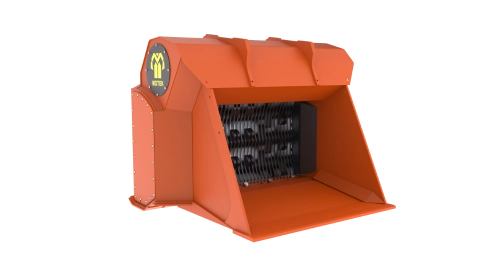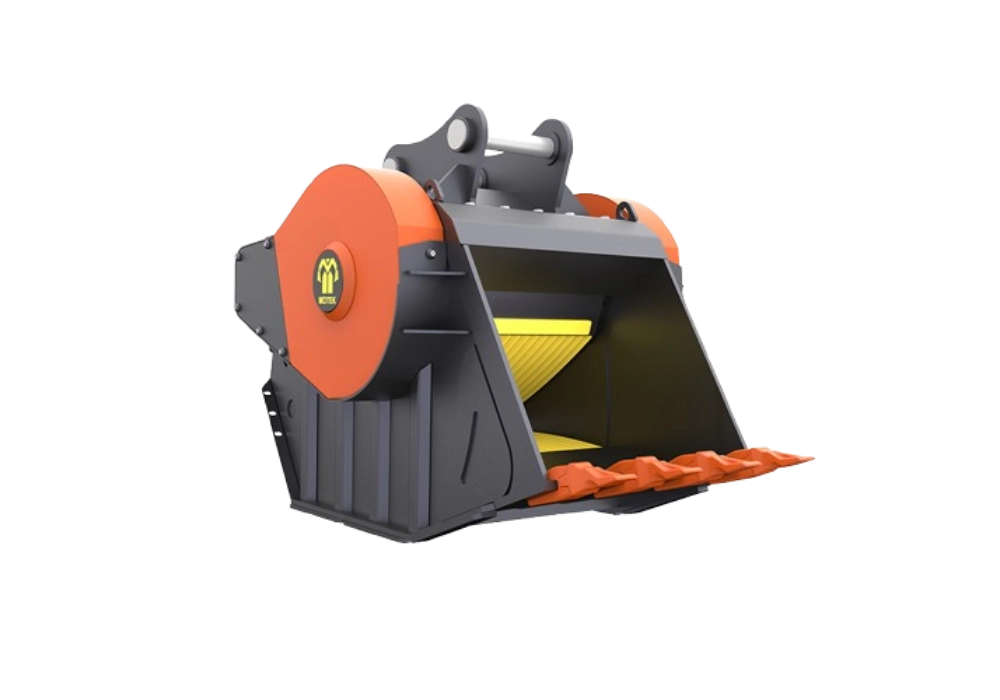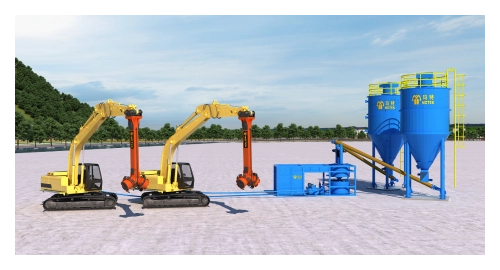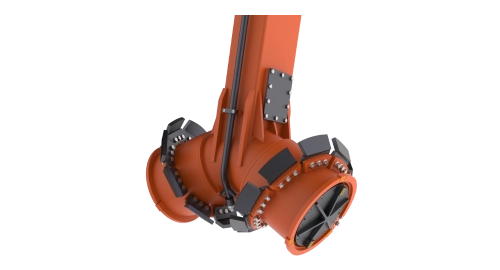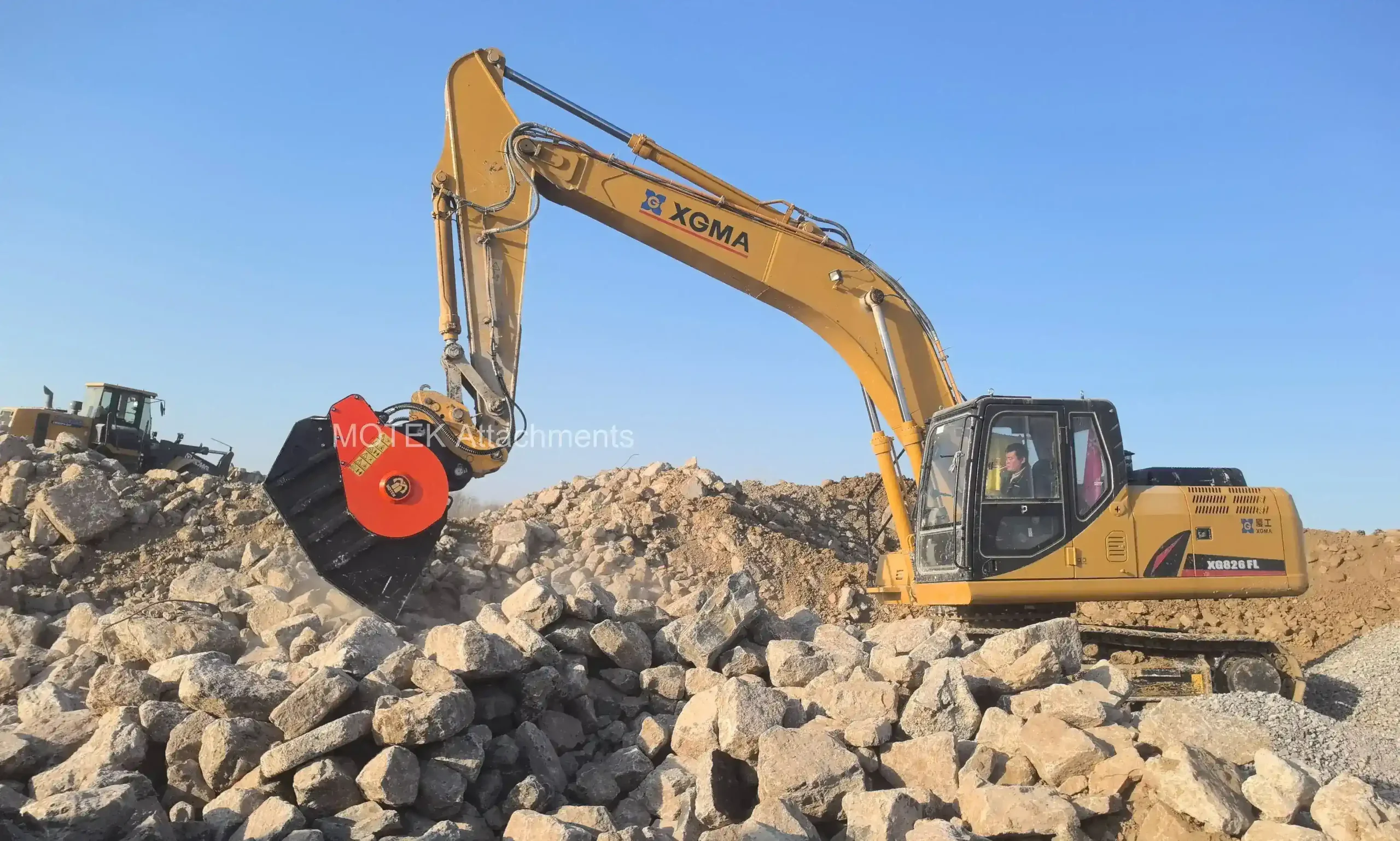نظام تجميد التربة في تجميد الأساسات والأكوام
Release time: 2025-05-21

In the field of civil engineering, soil stabilization method is a key link to ensure the stability and durability of buildings. Although traditional foundation treatment methods such as replacement filling, deep mixing or preloading are widely used, they face problems such as high cost, long construction period and environmental pollution. With the deepening of environmental protection concepts and technological progress, silt solidification system has gradually become an innovative solution in foundation treatment and piling engineering.
Technical principle of sludge solidification system
In-situ soil stabilization methods adds solidifying materials (such as cement, lime, slag, industrial solid waste, etc.) to high-water-content, low-strength sludge, and uses physical and chemical reactions to change the soil structure to form a solidified body with high strength and low permeability. Its core process is as follows:
1. Material mixing: The silt and solidifying agent are mixed evenly in proportion to form a homogeneous mixture.
2. Chemical reaction: The active ingredients in the curing agent (such as CaO, SiO₂) react with the water and clay minerals in the silt through hydration and ion exchange to form a gelling substance (such as C-S-H gel).
3. Structural strengthening: The gelling substance fills the pores of the soil to form a dense network structure, significantly improving the compressive strength and anti-permeability.
This technology is not only suitable for dredged silt from rivers and lakes, but can also process waste such as engineering spoil and construction mud, thus turning waste into treasure.
The core advantages of soil solidification system in foundation treatment
1. Significant environmental benefits, in line with the concept of green construction
Waste resource utilization: Soil stabilization for foundation requires the transportation of a large amount of inferior soil and the replacement of sand and gravel, resulting in high transportation costs and environmental burdens. Soil stabilization innovations can directly treat waste silt on site, reduce earth excavation and landfill, and reduce carbon emissions.
Reduce pollution spread: The solidified silt seals heavy metals and organic matter to avoid secondary pollution. For example, a river dredging project in Wuhan used solidification technology to convert 100,000 cubic meters of silt into roadbed materials, reducing the area occupied by the abandoned soil field by more than 60%.
2. Outstanding economic efficiency and reduced overall cost
Low material cost: The solidifying agent can be made of industrial by-products (such as steel slag, fly ash), and the unit price is only 1/3~1/2 of traditional sand and gravel.
Shortened construction period: No need to wait for natural settlement or purchase fillers, the construction period can be shortened by 30%~50%
3. Improve foundation bearing capacity and ensure project quality
The unconfined compressive strength of the solidified soil can reach 0.5~5MPa, far exceeding the 0.01~0.1MPa of natural soft soil, and can meet the load requirements of multi-story buildings, road subgrades, etc.
By adjusting the solidifying agent ratio, different geological problems can be solved in a targeted manner.
4. Wide adaptability, solving complex geological problems
It can effectively solidify silt with high water content (40%~200%) and high organic matter content, especially suitable for areas with dense river networks and widespread soft soil.
In narrow sites or deep foundation pit projects, in-situ solidification or modular construction can be flexibly adopted to avoid restrictions on the entry of large machinery.
Innovative application of soil solidification technology in foundation piling
1. Replace traditional pile foundation materials and optimize construction process
– Solidified soil piles: Use the solidified silt directly as pile material to replace concrete precast piles or steel pipe piles. .
– Composite foundation enhancement: Add a solidifying agent to the soil between piles to form a “rigid pile + solidified soil” composite foundation, which synergistically improves the overall stability.
2. Overcoming challenges of special geological conditions
– Plastic silt area: In a cross-sea bridge project in the Pearl River Delta, the thickness of the plastic silt layer reached 15 meters, and traditional cast-in-place piles were prone to shrinkage. After using the rotary spraying solidification technology, the pile foundation settlement was controlled within 5mm.
– Earthquake liquefaction area: The solidifying agent can increase the density of the sandy soil layer and reduce the risk of liquefaction.
3. Combined with intelligent construction technology
– Precise proportion control: Real-time monitoring of sludge moisture content and strength changes through IoT sensors, dynamically adjusting the amount of curing agent added.
– Automated construction equipment: Unmanned mixing pile machine, 3D printing solidified soil structure and other new technologies to further improve construction accuracy and efficiency.
Through technological innovation and engineering practice, the soil stabilization system has successfully solved the environmental protection, cost and efficiency problems in traditional foundation treatment. Its advantages in foundation solidification and piling are not only reflected in the improvement of strength and the shortening of construction period, but also in promoting the transformation of engineering construction towards the direction of “resource recycling and environmental friendliness”. With technological iteration and policy support, this system is expected to become one of the core solutions in the field of geotechnical engineering in the future.


